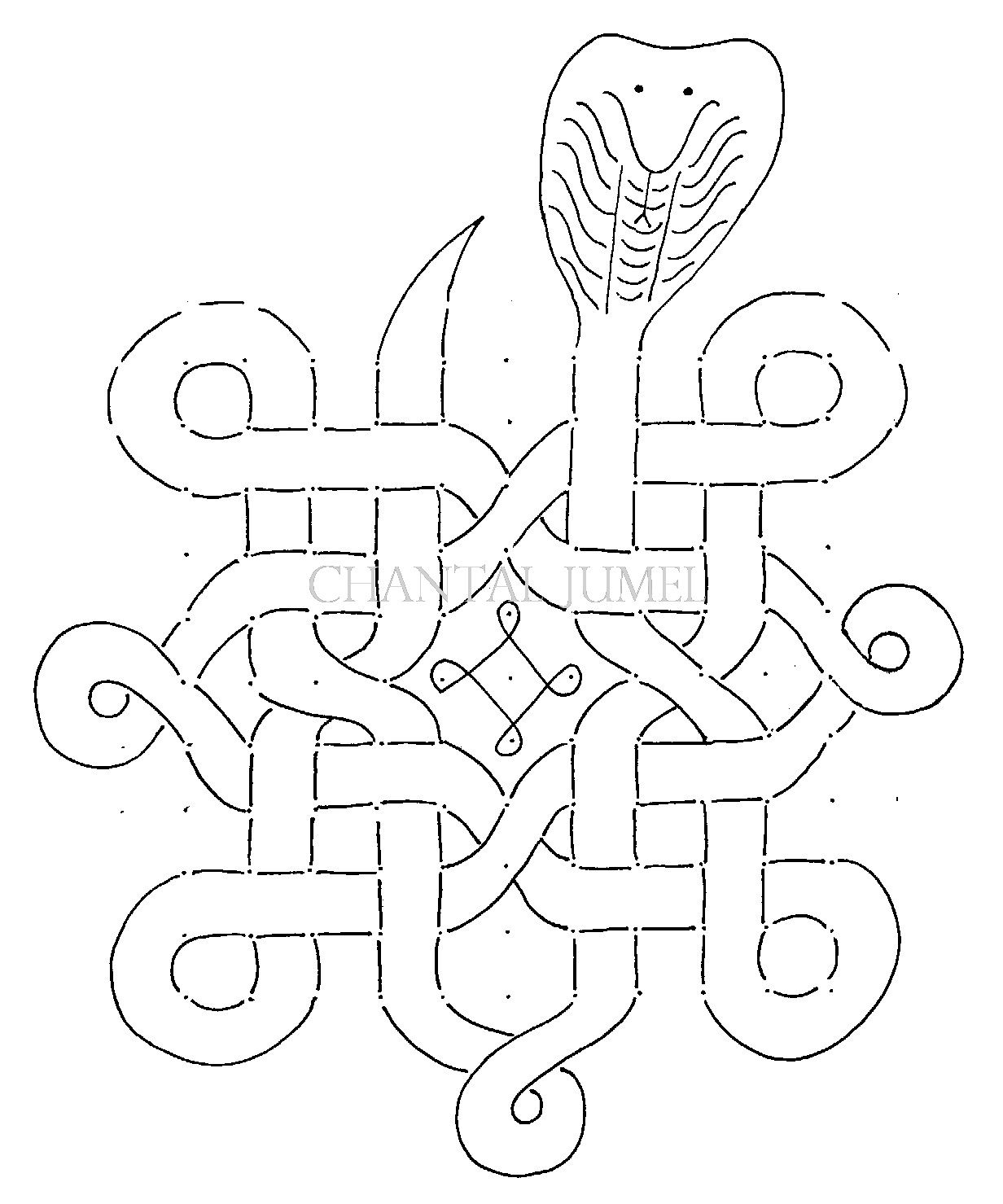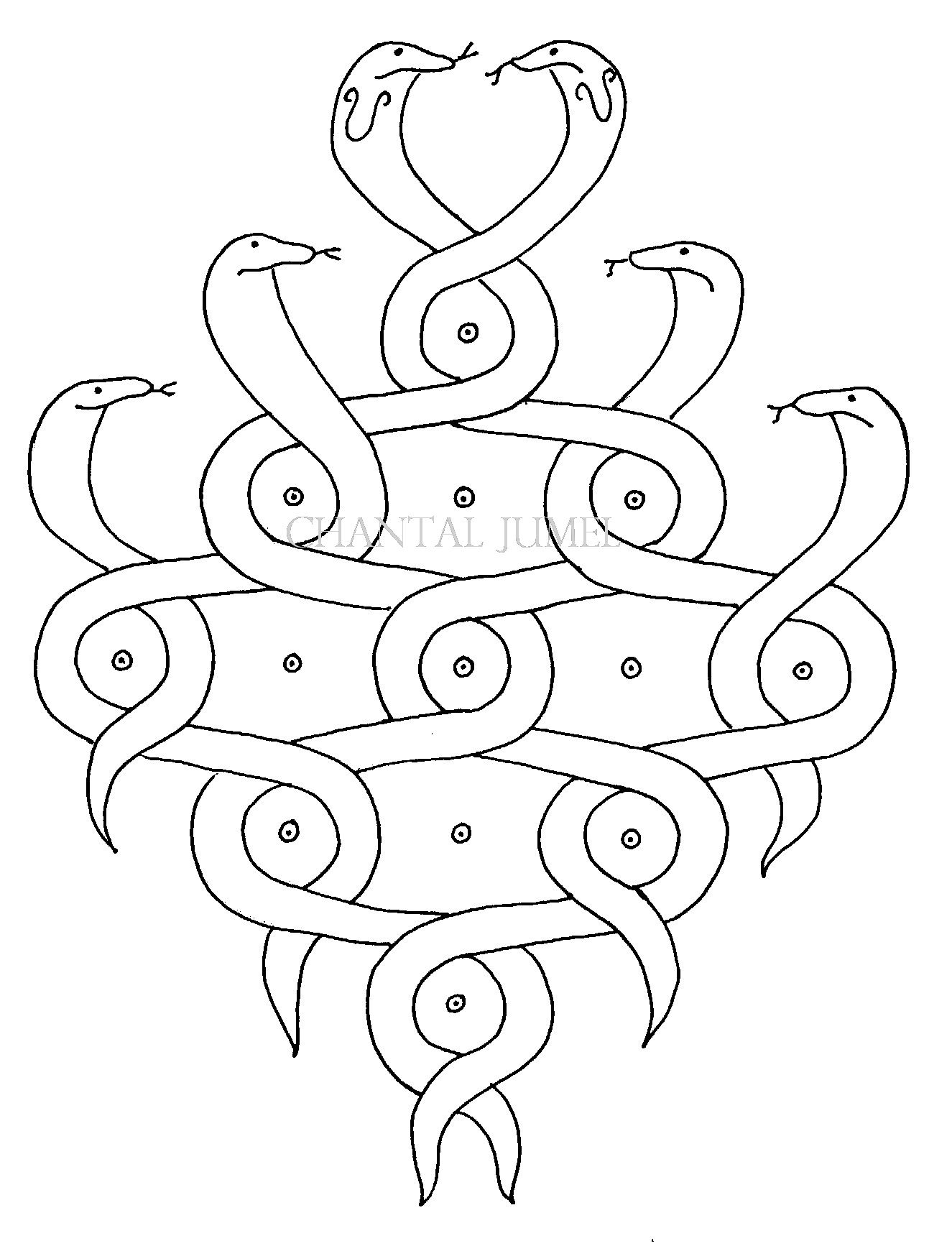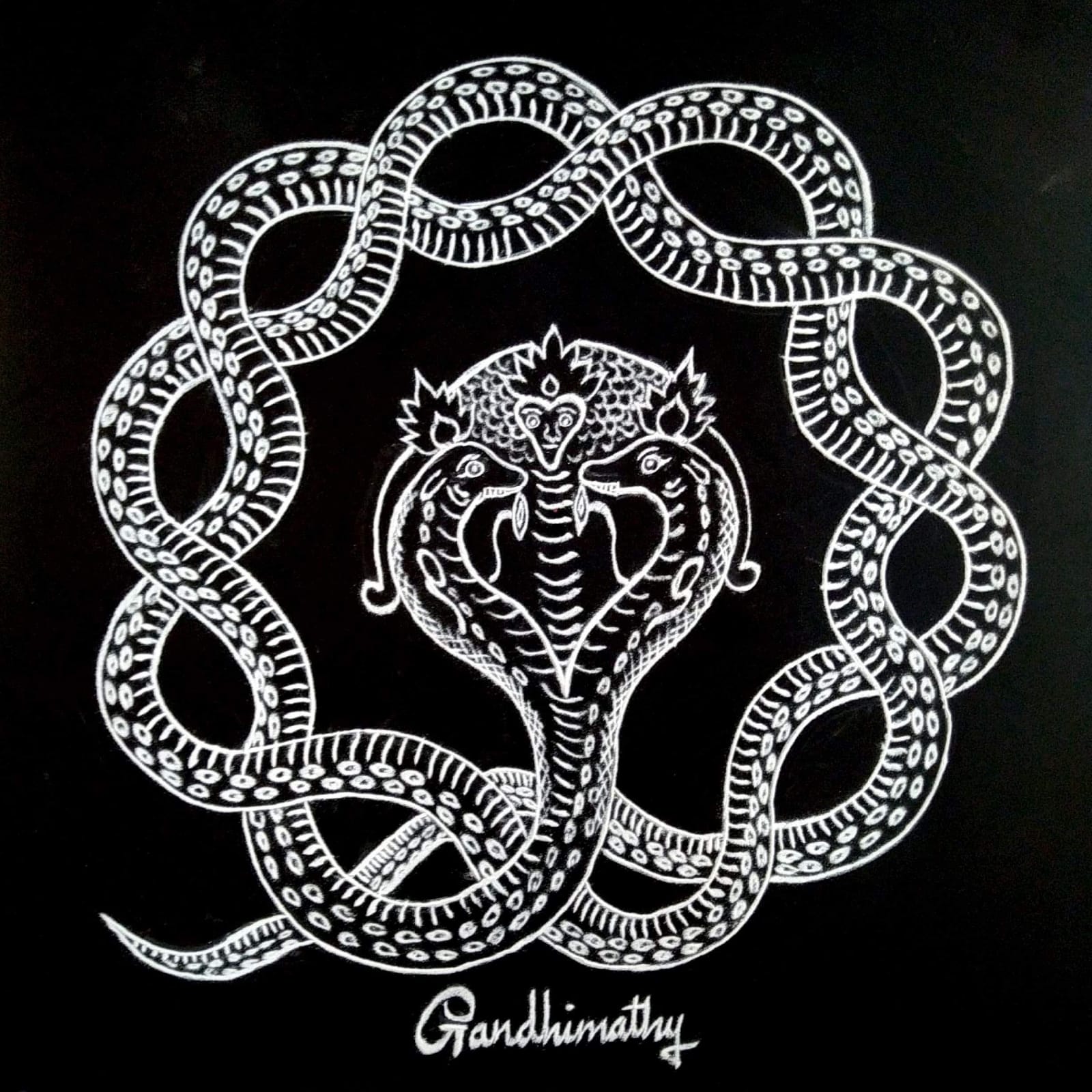Celebrating Nâga Panchami
The festival of Nâga Panchami is celebrated during the Tamil month of Aadi (mid-July, mid-August) in most parts of South India. It is also known as Garuda Panchami, as on the first day, Garuda (an eagle) and the vehicle of God Vishnu, is worshipped along with the serpent-gods.
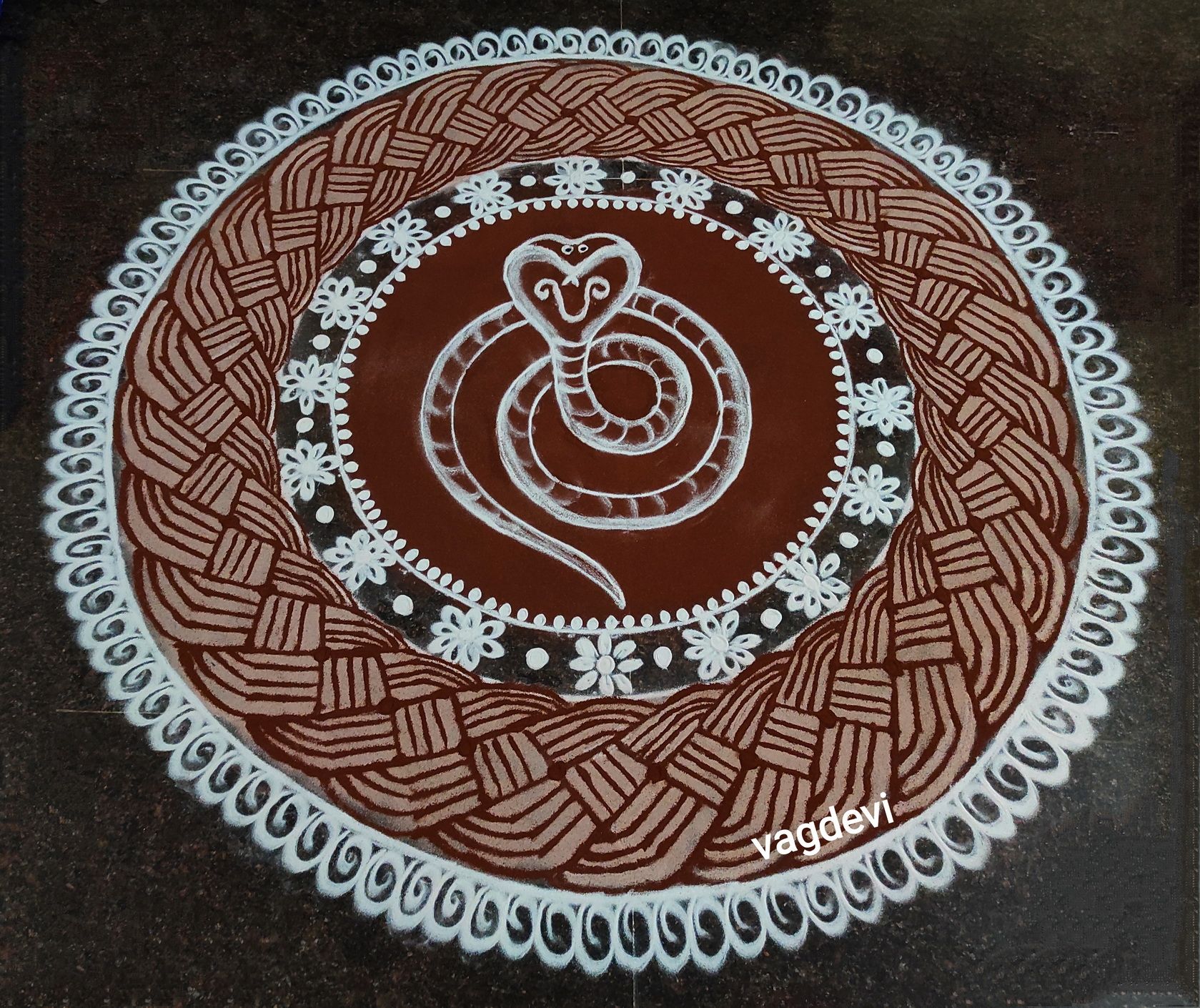
In India, snakes are highly revered and raised to the status of deities. The serpent-gods are considered as water-spirits who dwell in ponds, lakes, and seas in beautiful palaces studded with the most exquisite gems. The secret of these treasures will only be revealed to the one who is pure in heart. In South India, Nâgakal are votive tablets or sculptures to snake divinities. They are frequently placed in groups in temples, near ponds, along the roads, hidden between the roots of a Peepal tree (Ficus Religiosa). The Nâga take many forms: some as wholly human or wholly serpentine, half-human, half-serpentine, or as hooded cobras having one to several heads deployed like an umbrella. Other intertwined snakes resemble the caduceus of Mercury.
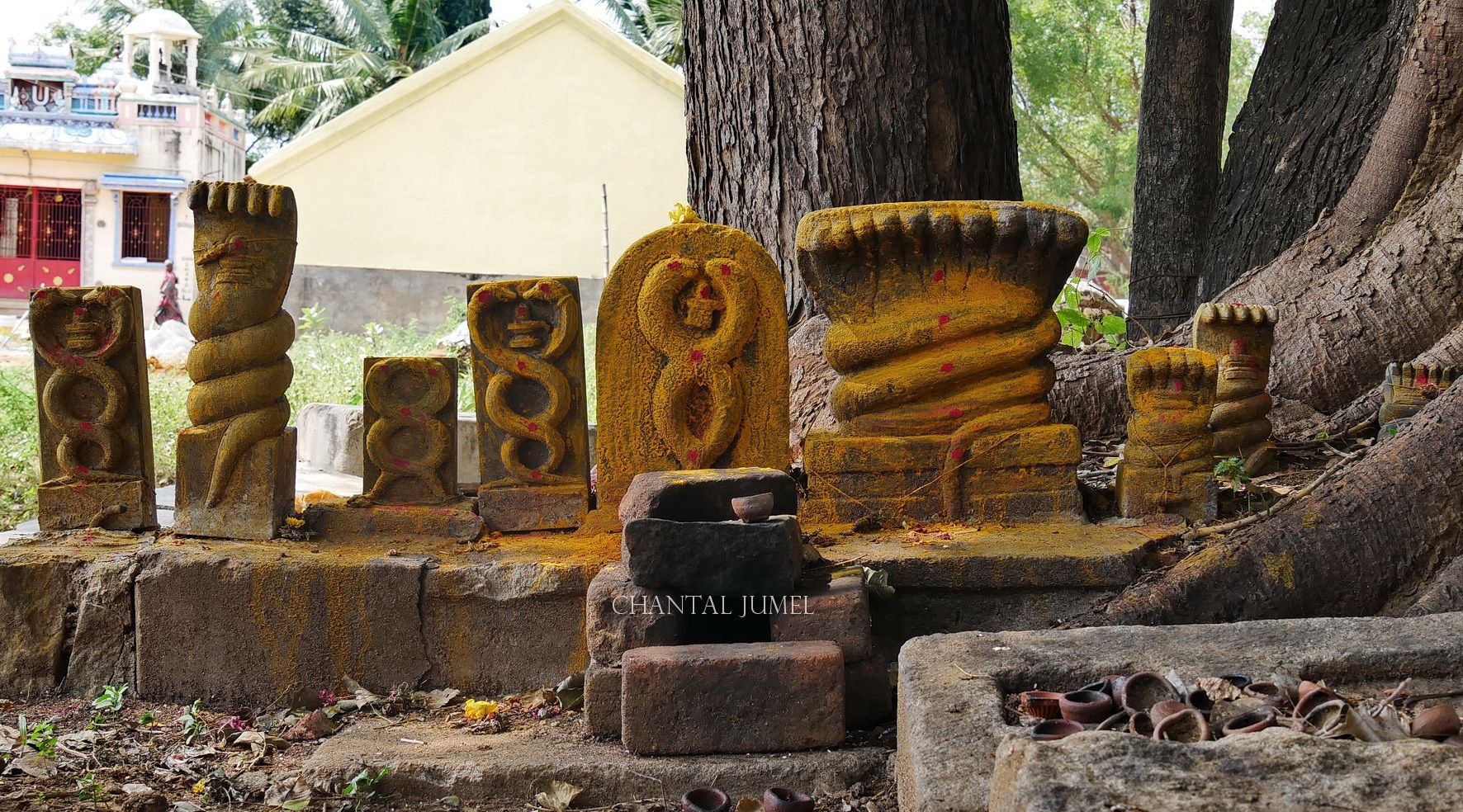
In temples, the votive stones are placed in groups outside the main shrine. Villagers, devotees, and travellers stop in front of them, place offerings and whisper their requests. People worship them to prevent barrenness, blindness and skin diseases.

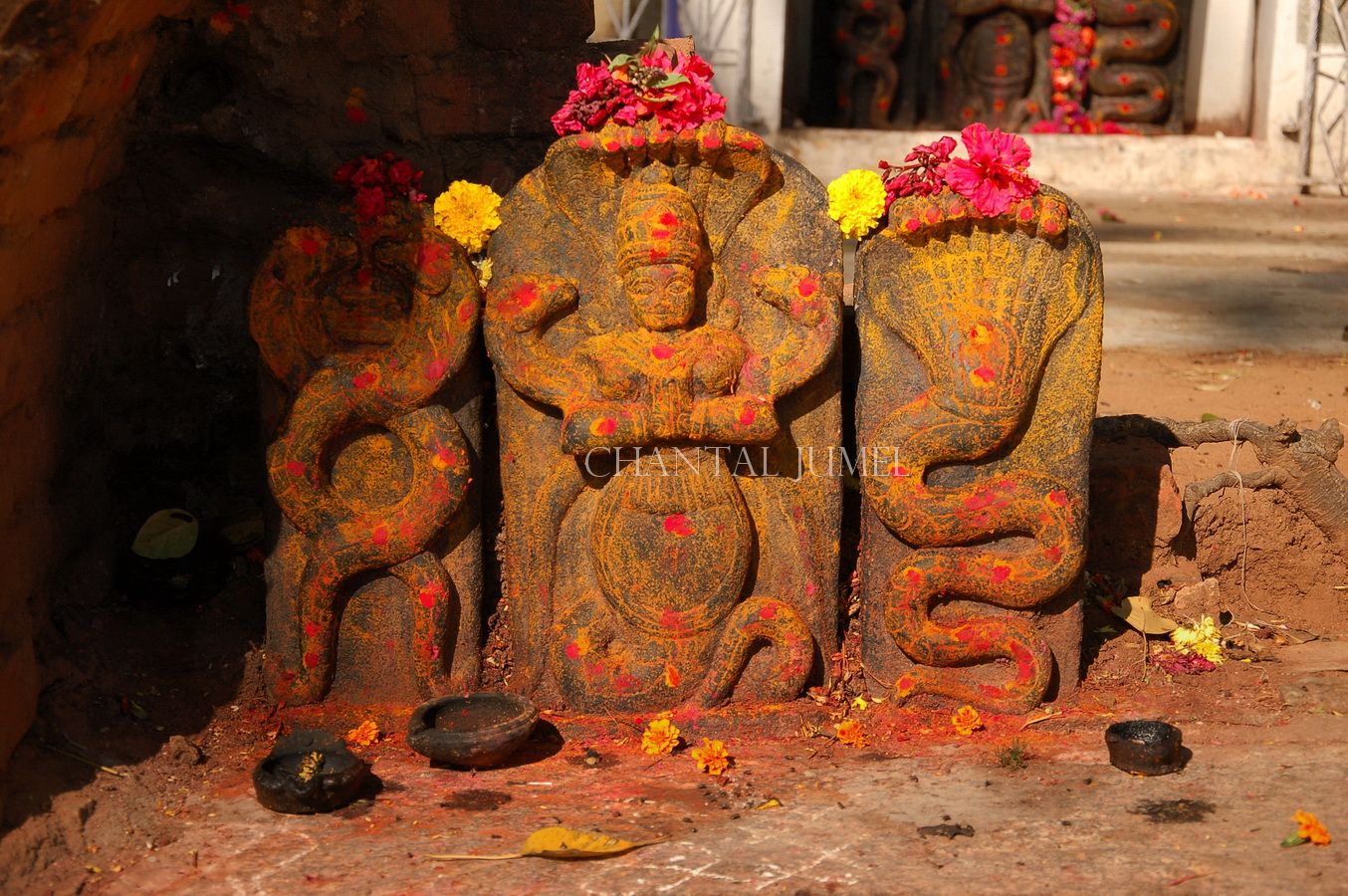
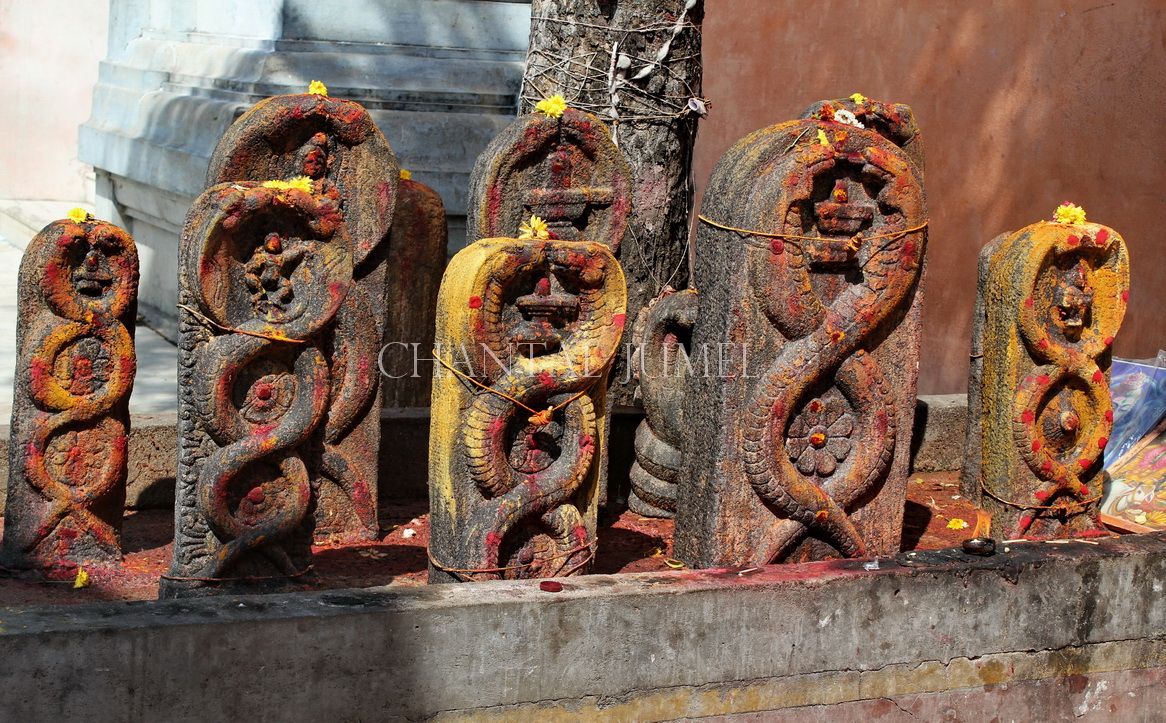
The serpent-gods are said to reside in underground abodes such as caves, mines, and anthills. The latter are worshipped and according to beliefs, the holes are the gates to their underworld kingdom (Nâga-loka).
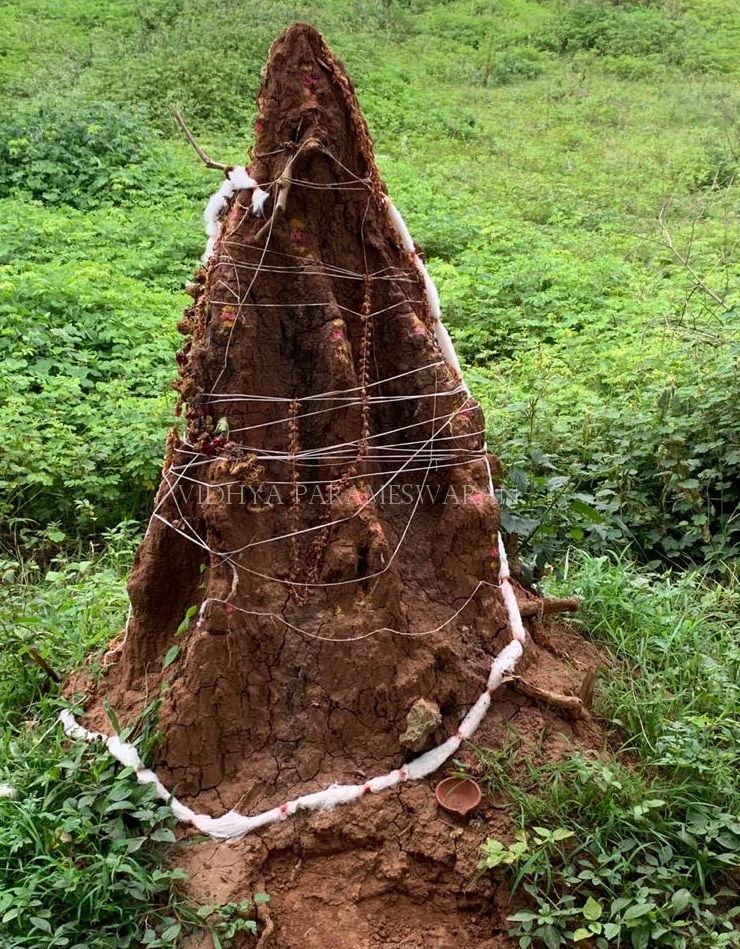

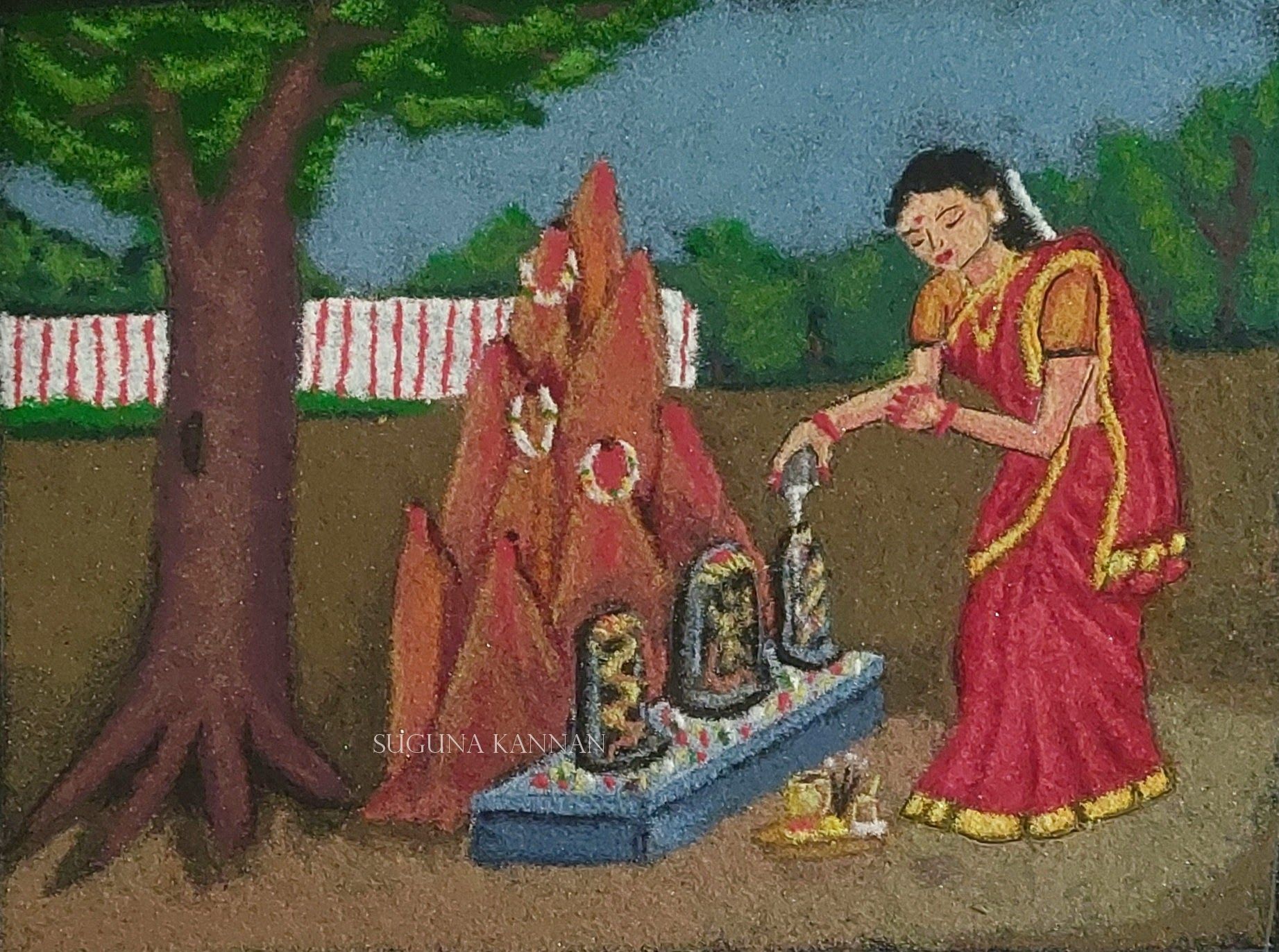
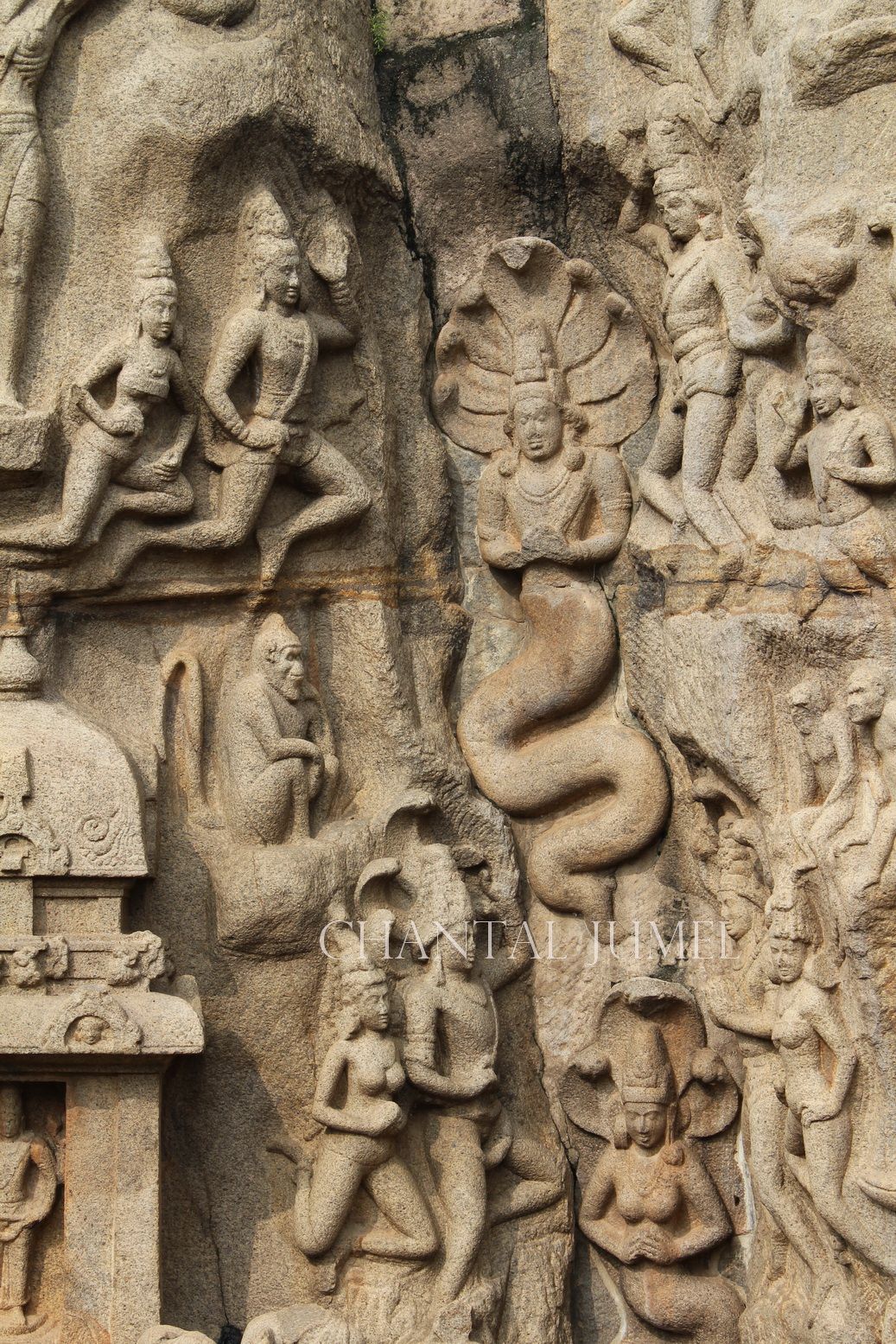
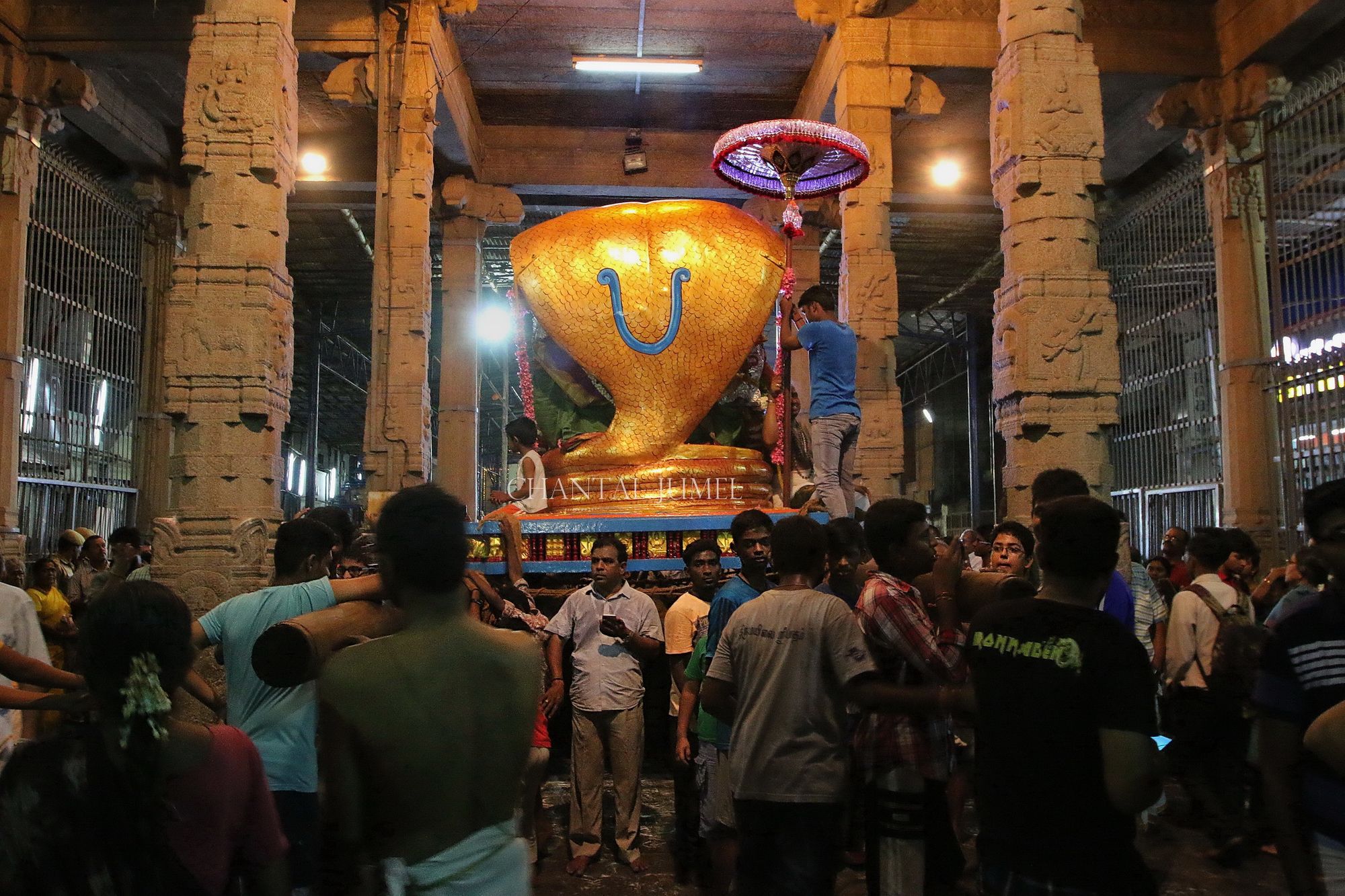
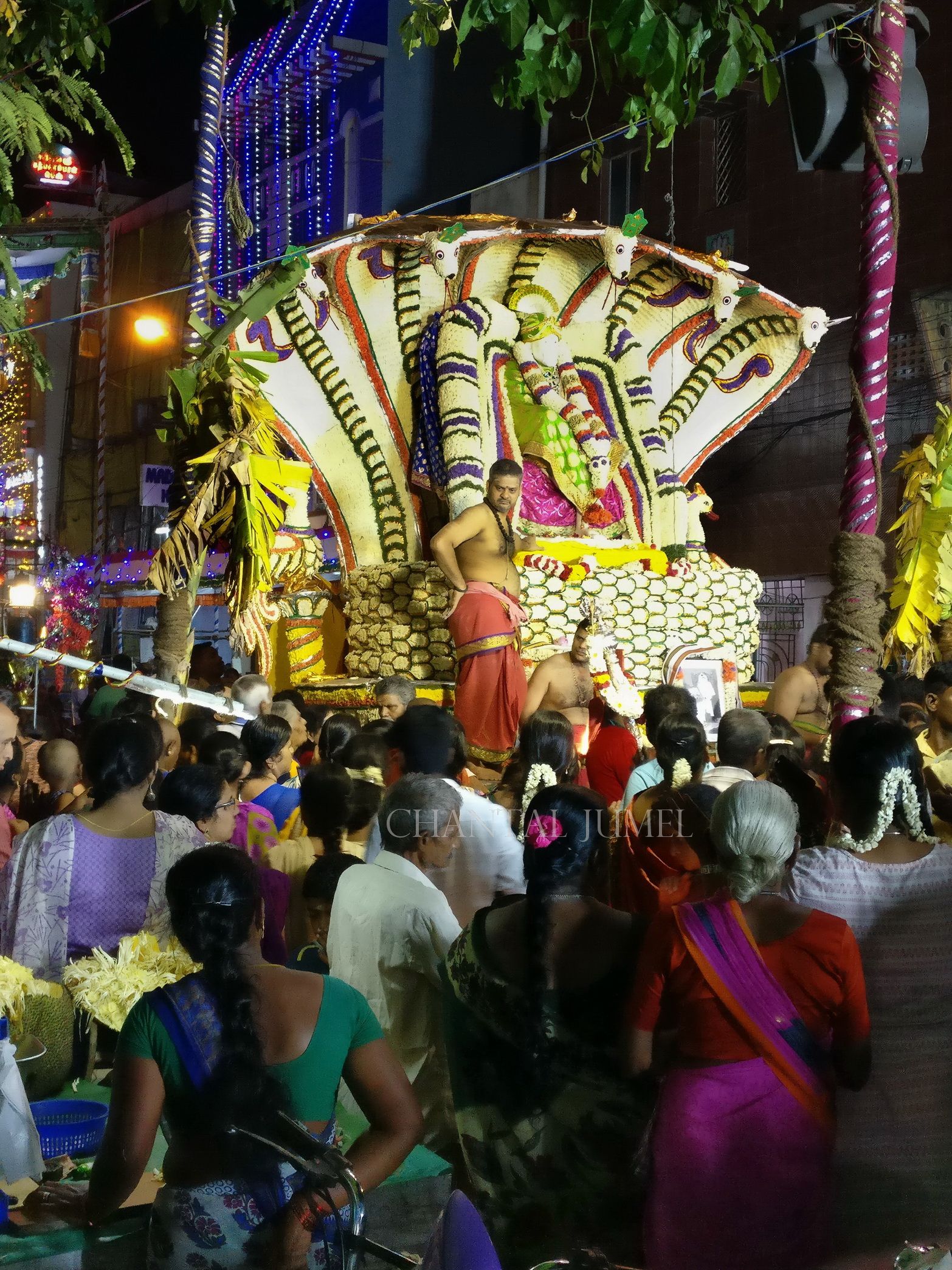

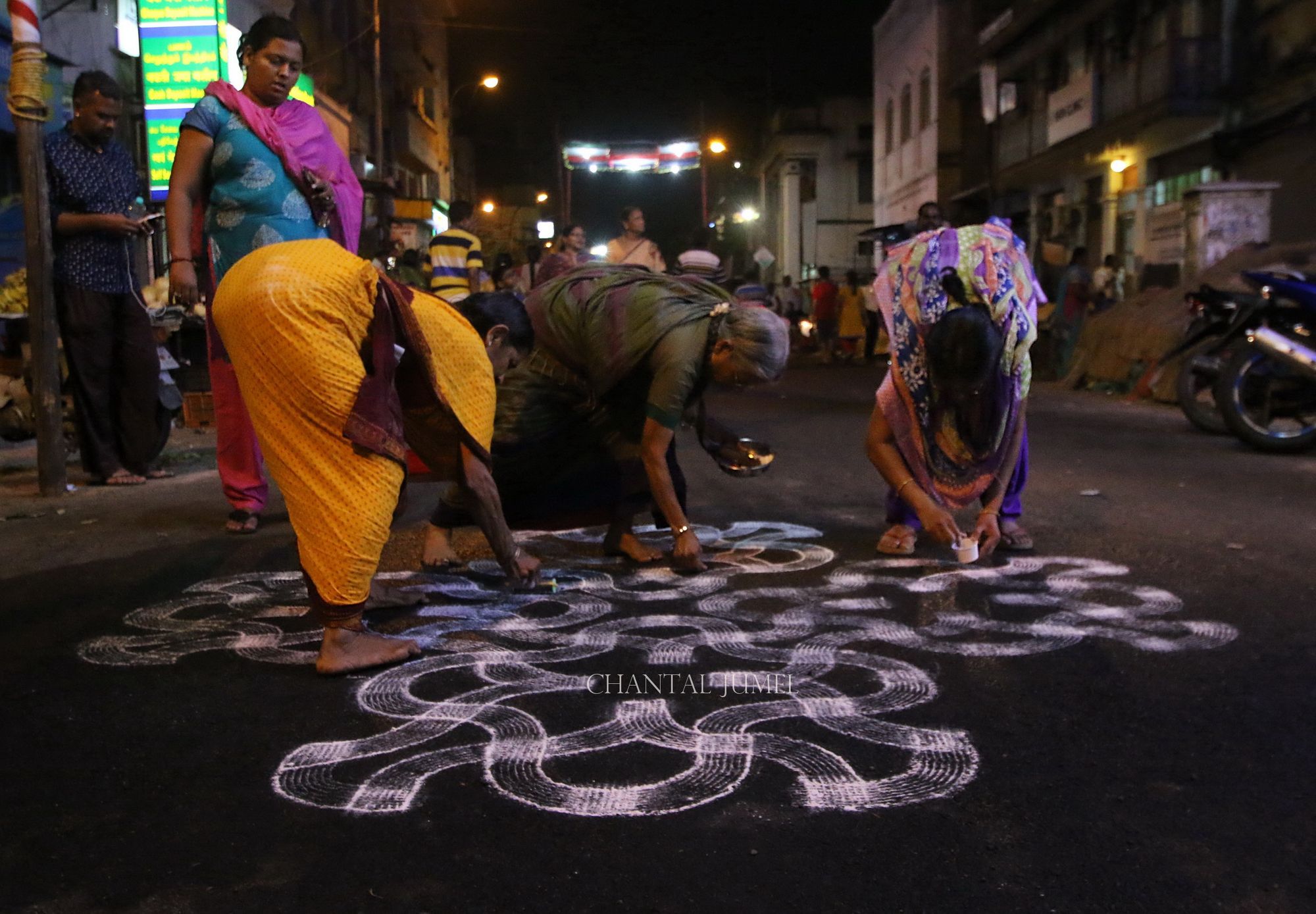

Garuda and Nâga Panchami
The festival of Nâga Panchami is celebrated during the Tamil month of Aadi (mid-July, mid-August) in most parts of South India. It is also known as Garuda Panchami, as on the first day, Garuda, an eagle, and mount of god Vishnu, is worshipped along with the serpent-gods. This is the story of Garuda and the thousand snakes ; brothers and rivals at once.
Garuda and thousand snakes
According to one story, the sage Kashyapa had two wives named Kadru and Vinata. Kadru gave birth to a thousand snakes, whereas, Vinata, mother of birds, gave birth to Garuda and was tricked into becoming the slave of her sister, Kadru, mother of the snake-gods. The enmity between birds and snakes is attributed to this episode. The Nâga agreed to release Vinata if Garuda could obtain for them amrita, the nectar of immortality. Garuda eager to free his mother, performed that feat, and flew off with the nectar. Overjoyed, the snakes immediately freed Vinata. Indra, the king of the gods was worried as he did not want the snakes to drink the nectar, become immortal, and harass people. Garuda had an idea and spoke to the Nâga : "Shouldn’t you purify yourselves before you drink the nectar?” The snakes agreed and Garuda placed the pot on a bed of kusha grass. When the snakes came back from bathing, the nectar has vanished. Hoping for some left drops, they licked the kusha grass but its sharp blades cut their tongues. And so, legend has it, that snakes have had forked tongues since then.
Garuda is either described as a man with wings, and some bird features, or as a mythical eagle with golden plumage, and enemy of snakes. The story tells how that day remembers Garuda’s love and devotion for his mother Vinata. Thus, the day celebrates mother and son relationship. As a result, Garuda appears in the kolam of the first day. The second day, dedicated to the serpent-gods, is an auspicious time to seek protection against snake afflictions from previous births, and to invoke serpentine blessings for the wellbeing of the children, family, and overall prosperity. People worship them also to prevent barrenness, blindness, and skin diseases. I was also told that chemical poisoning, allergic substances, as well as addictions to alcohol and drugs were snake-related afflictions. The only remedy is to worship the Nâga to alleviate oneself of these evils.


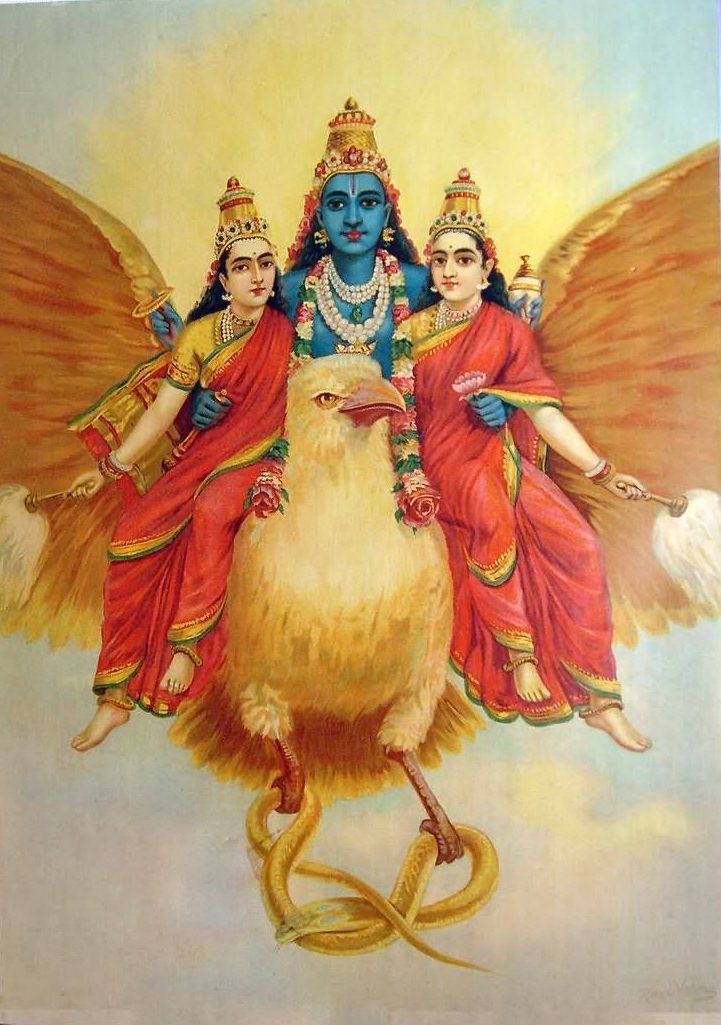
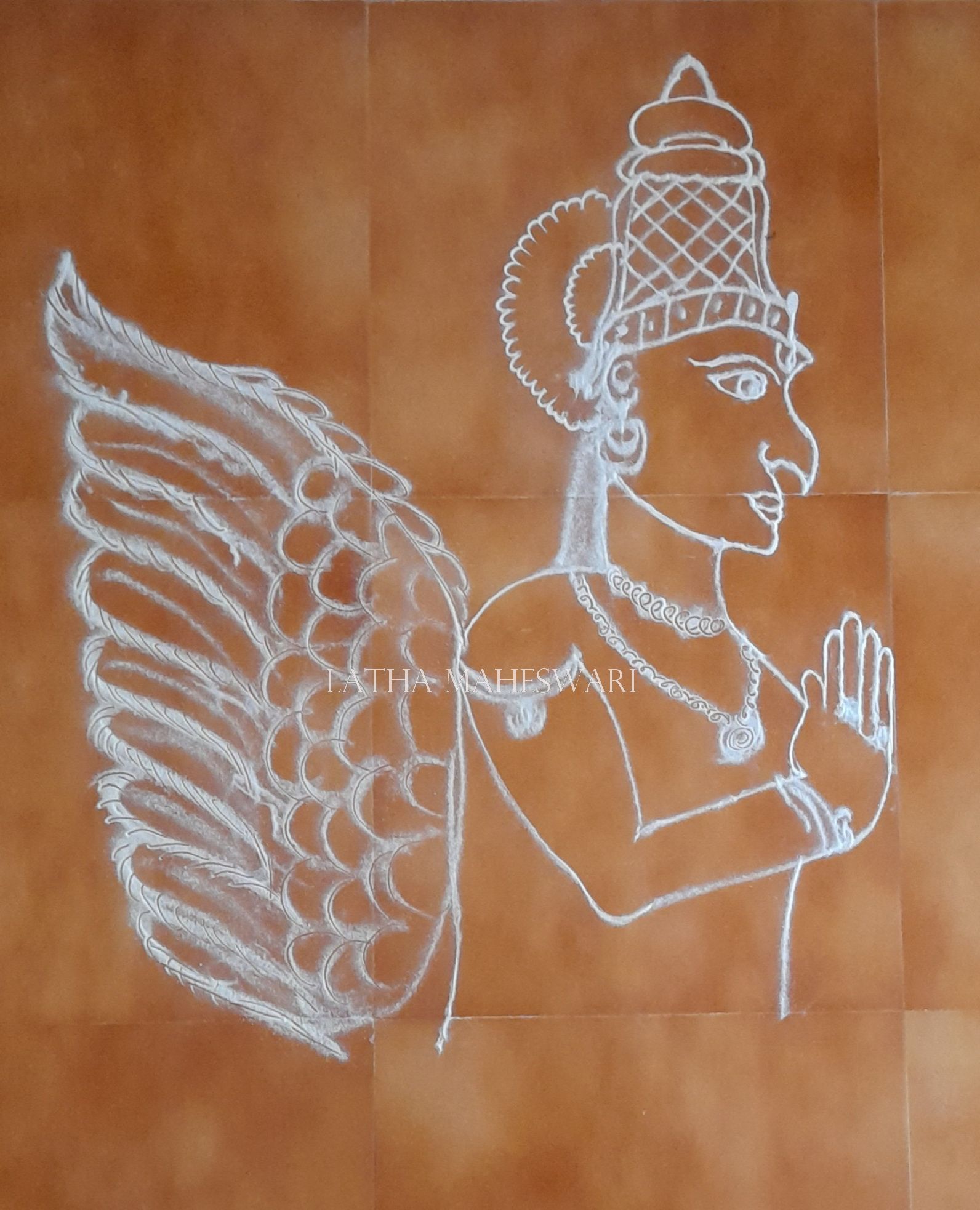
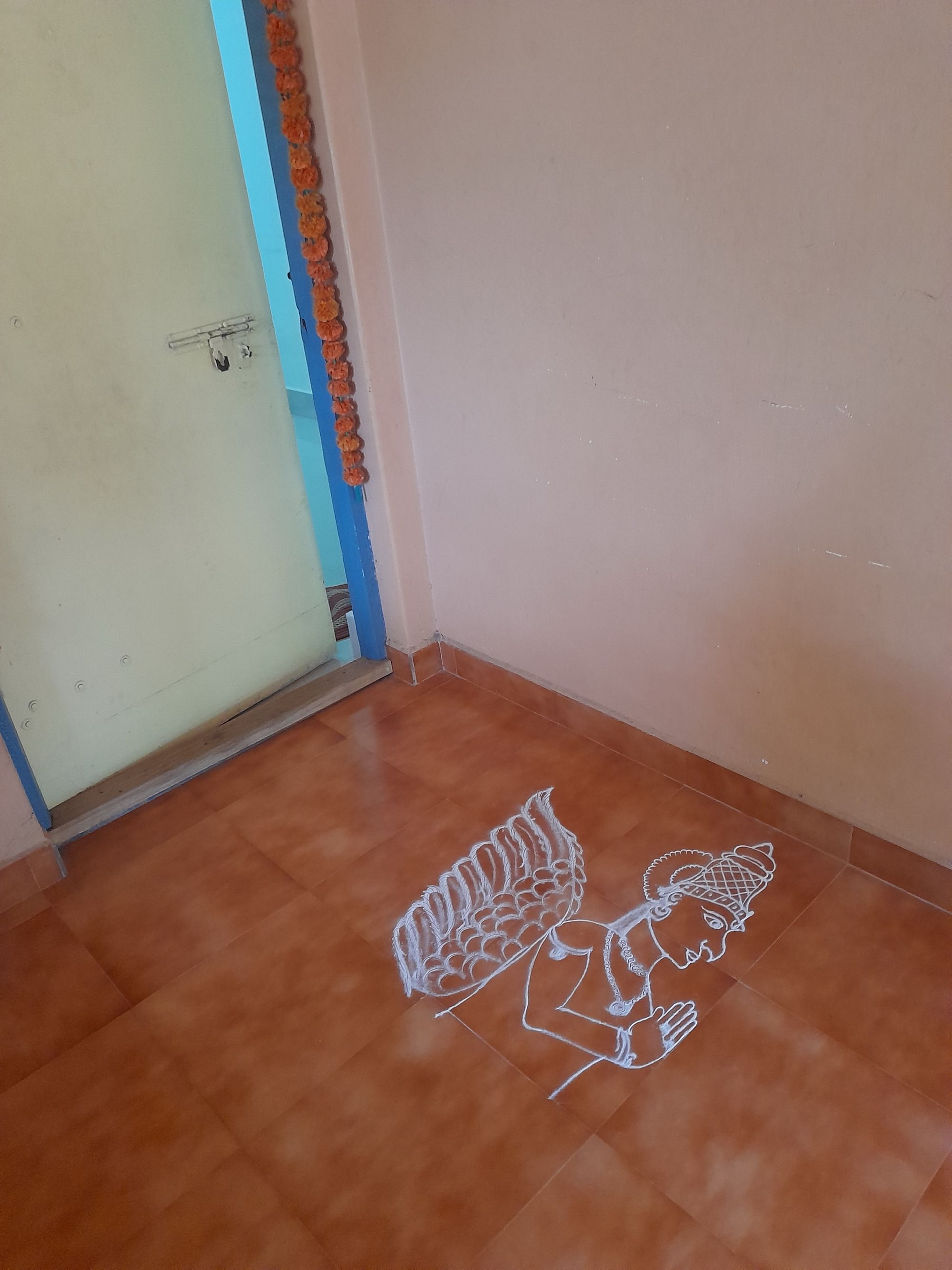
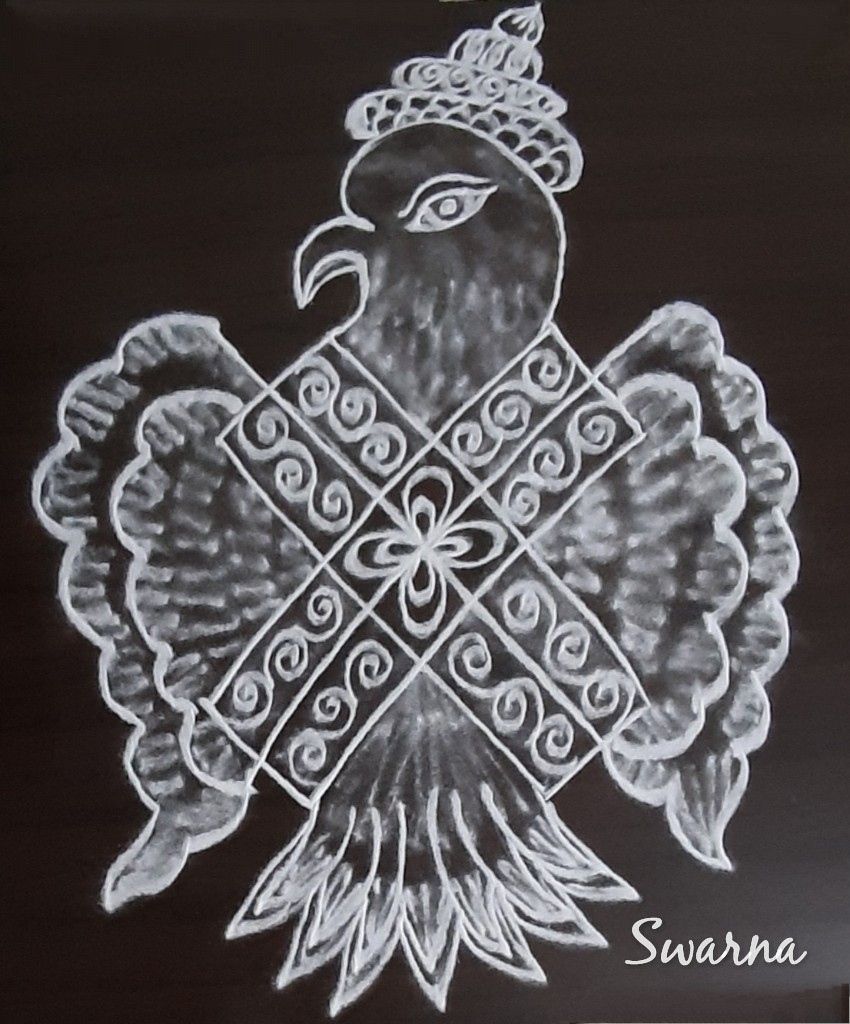
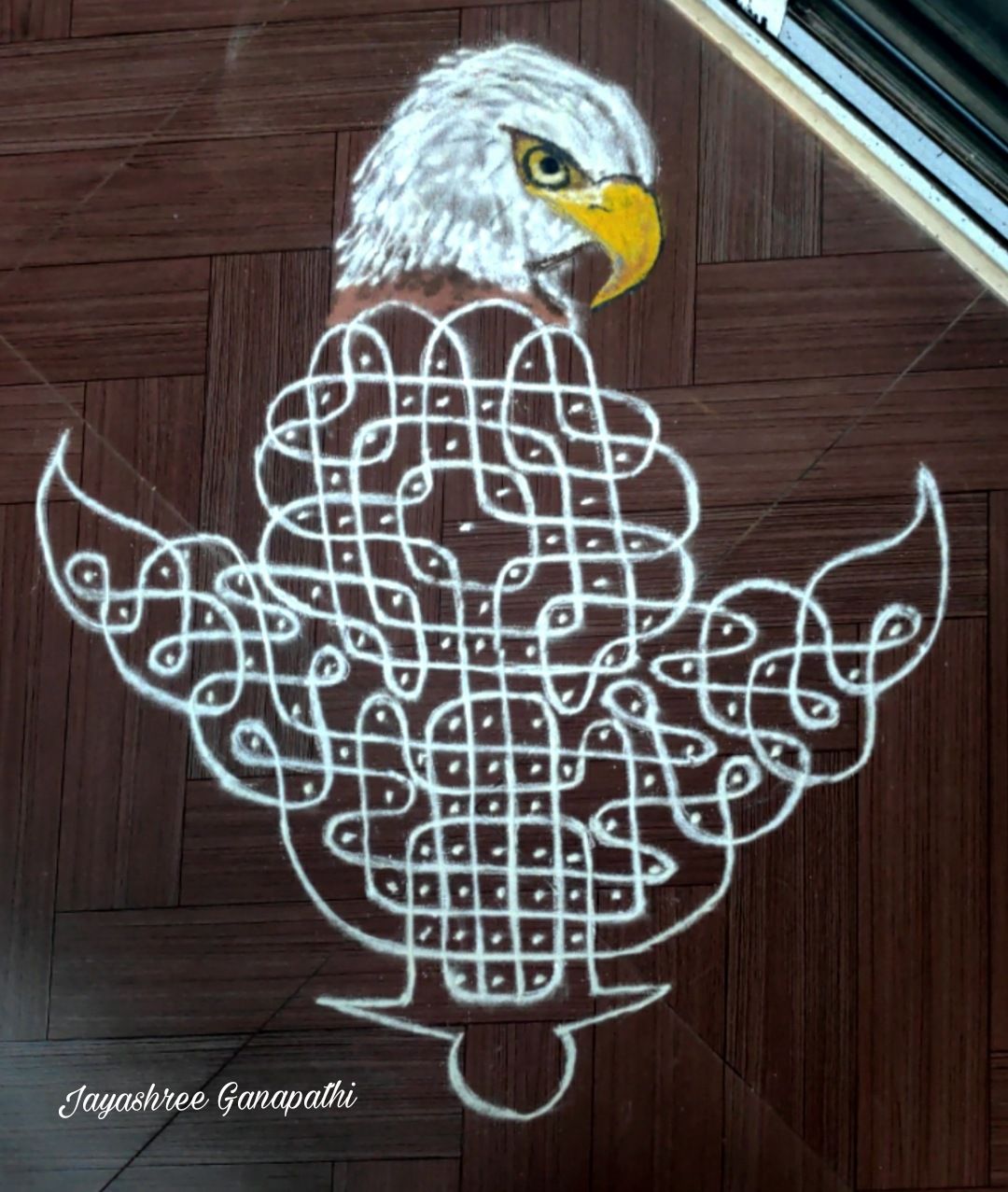
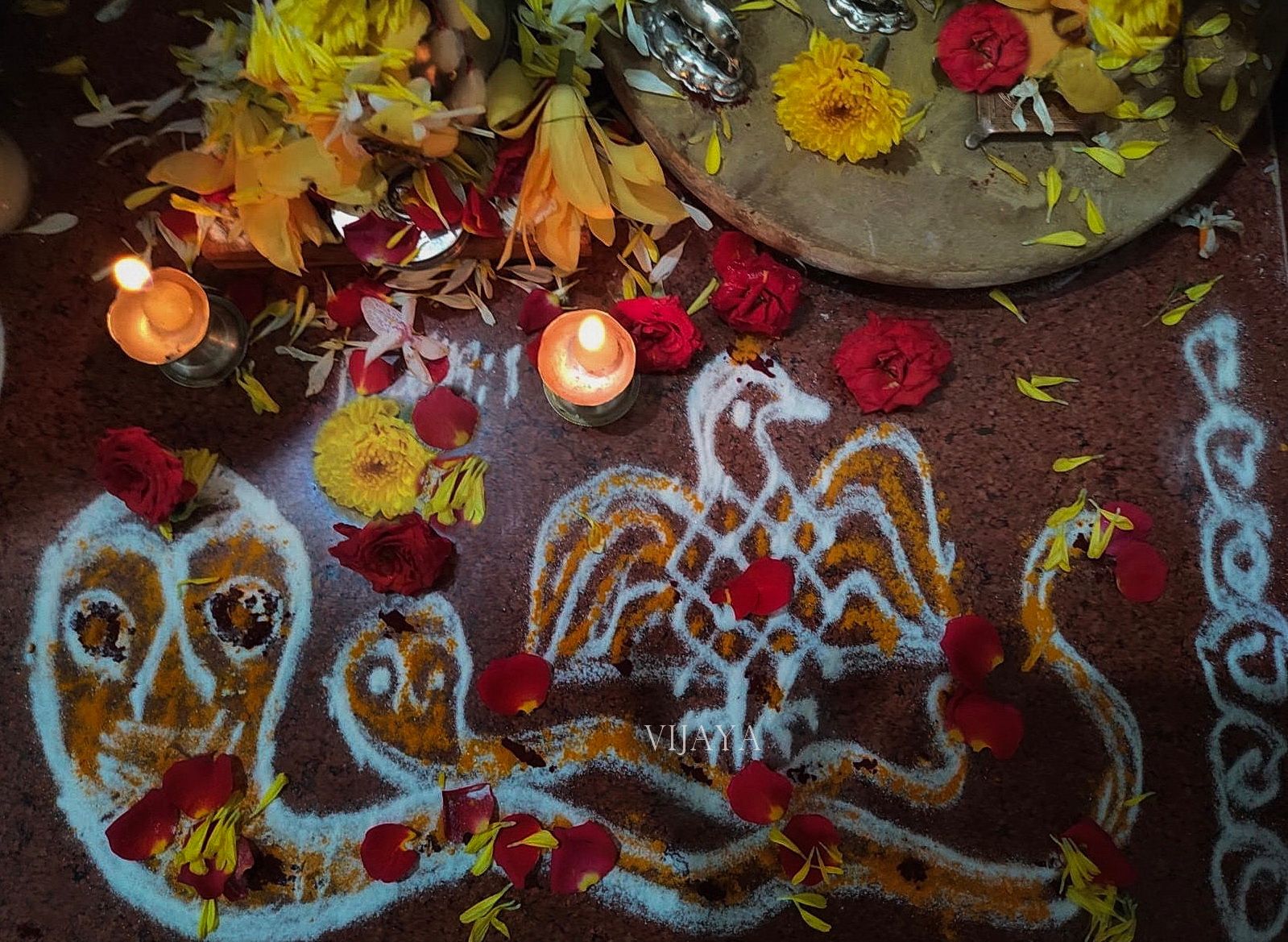
On the second day, snakes are drawn on the threshold of the house or in the prayer room. It is the only time in the year where one finds such kolam, as there is no question inviting them to visit homes the rest of the year.

My friend Pratheeba explains what Nâgadeva puja means to her and her family. "For two days, we welcome the serpent-gods and draw a pair of snakes on the threshold looking towards the house. The next day, it will be drawn with the head looking outward ready to depart. Snakes are also drawn on the entrance wall with turmeric paste. On these two days, we won't eat anything that ressembles a snake such as snake gourd, semia (vermicelli) and potato as it has a skin."
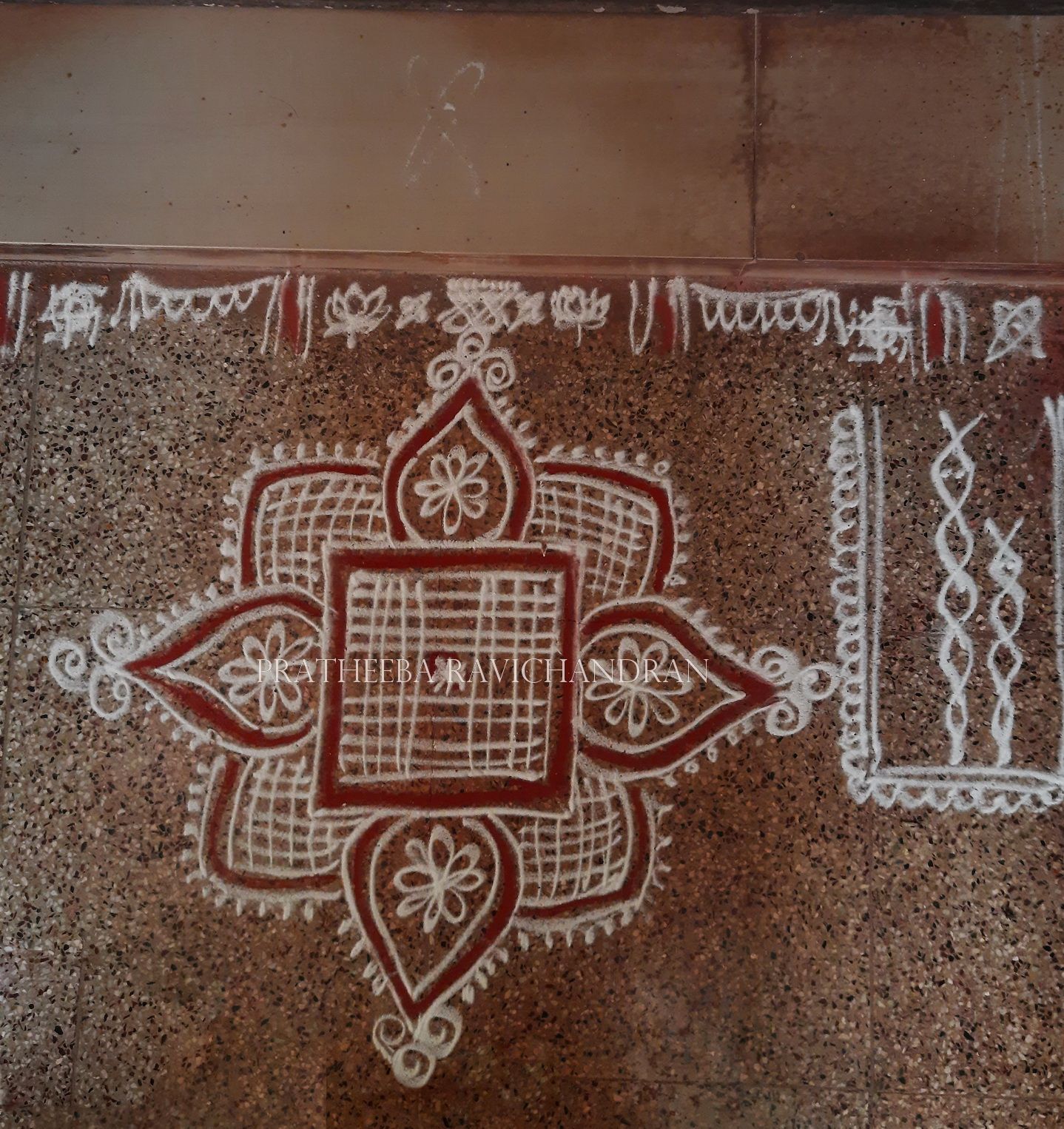
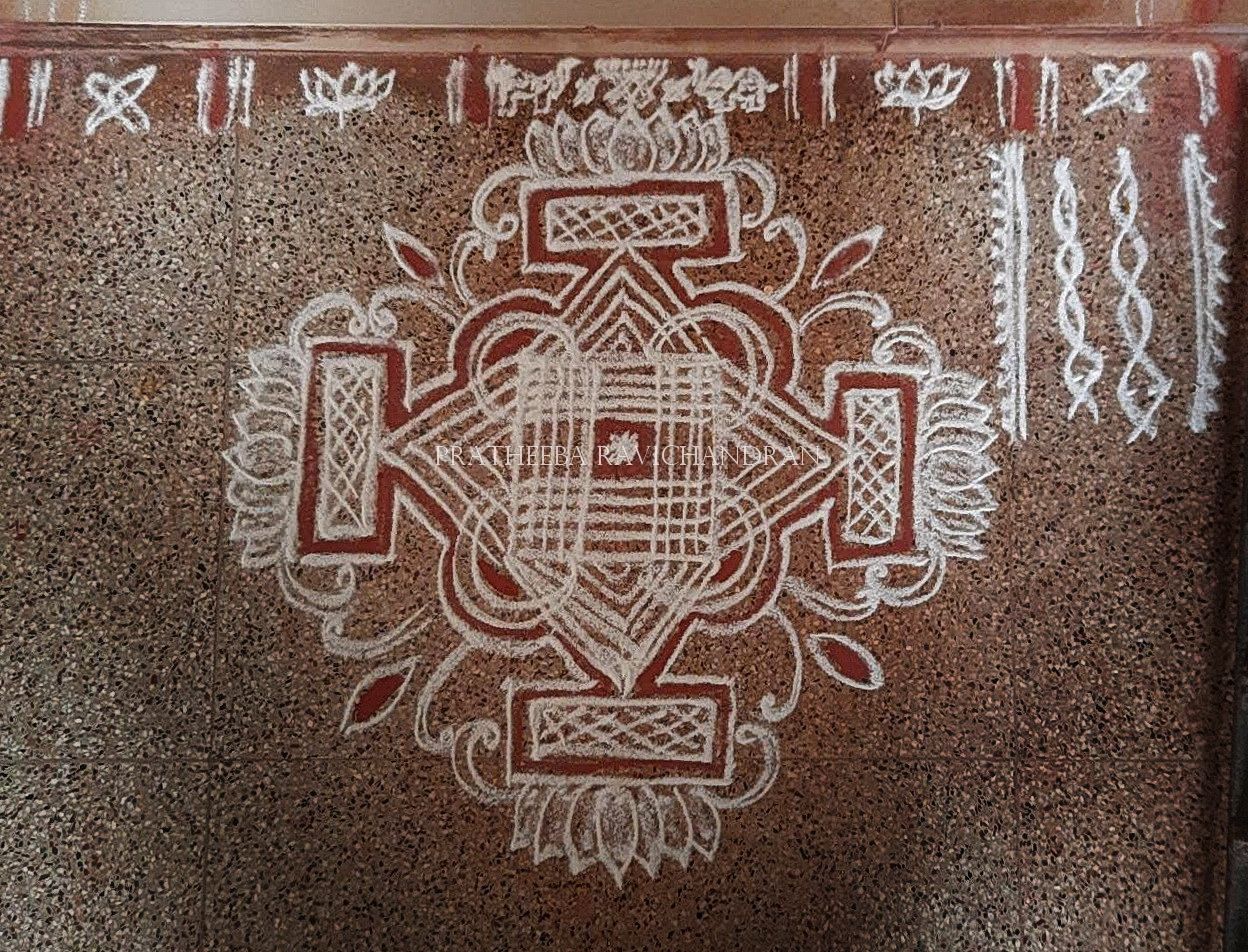



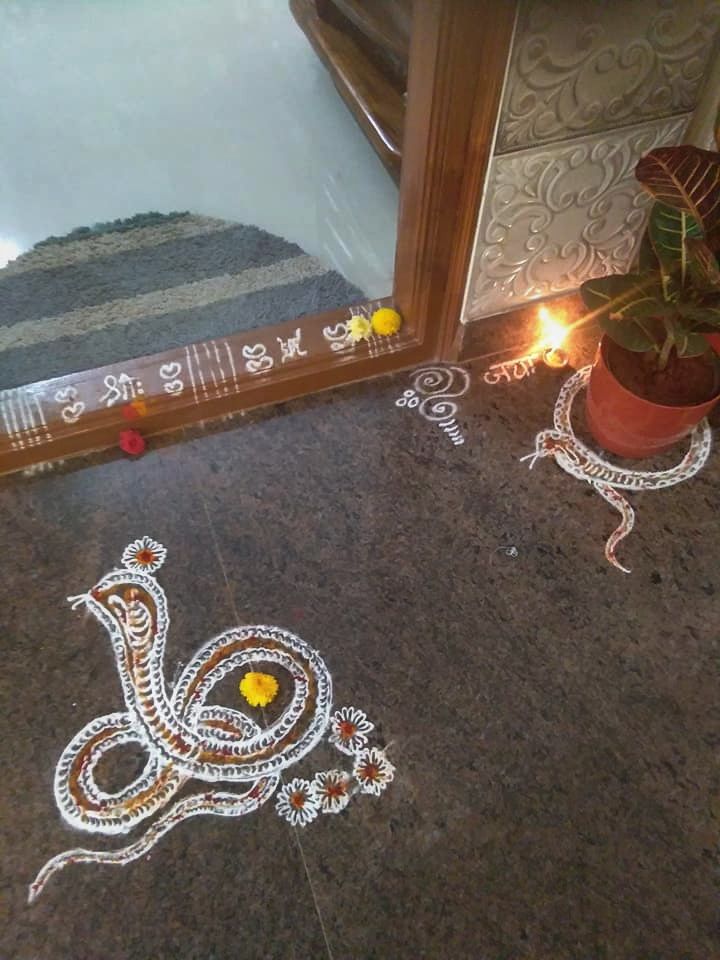
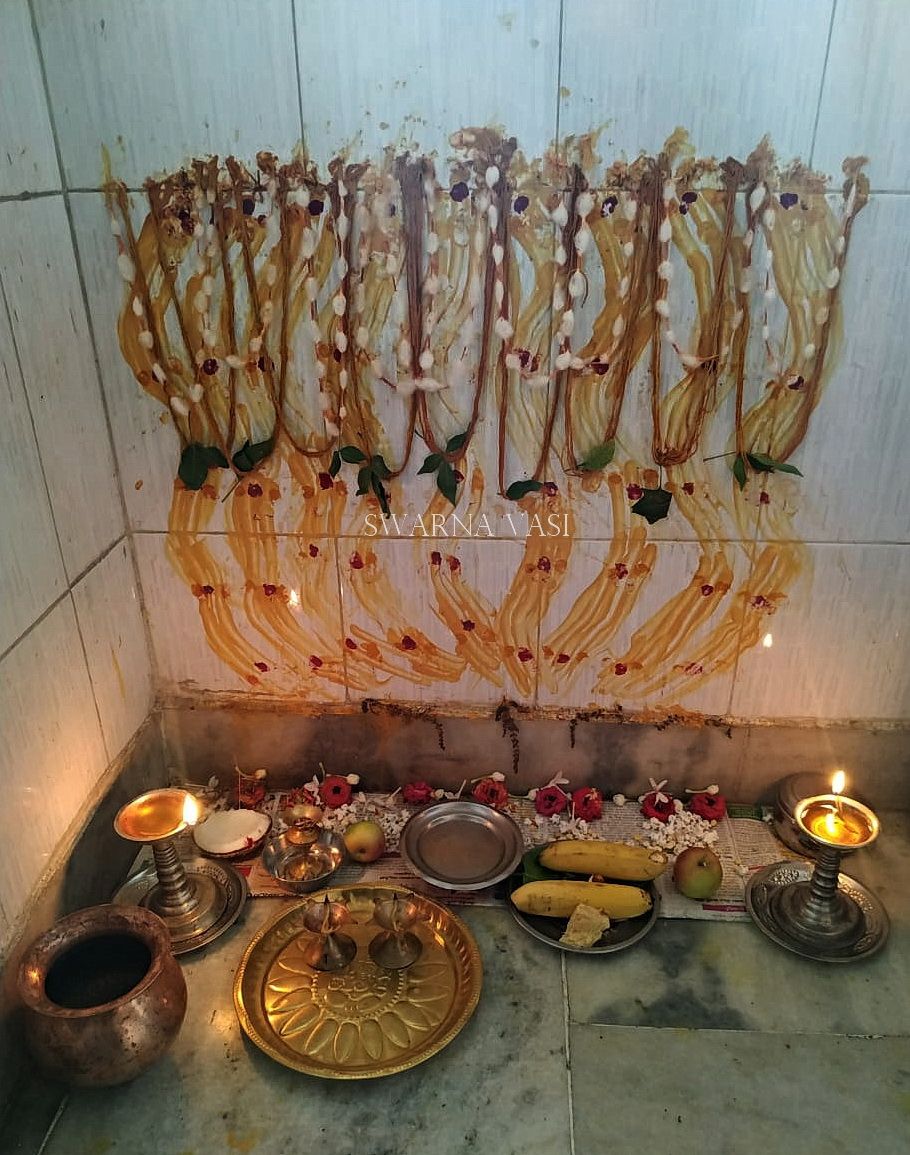
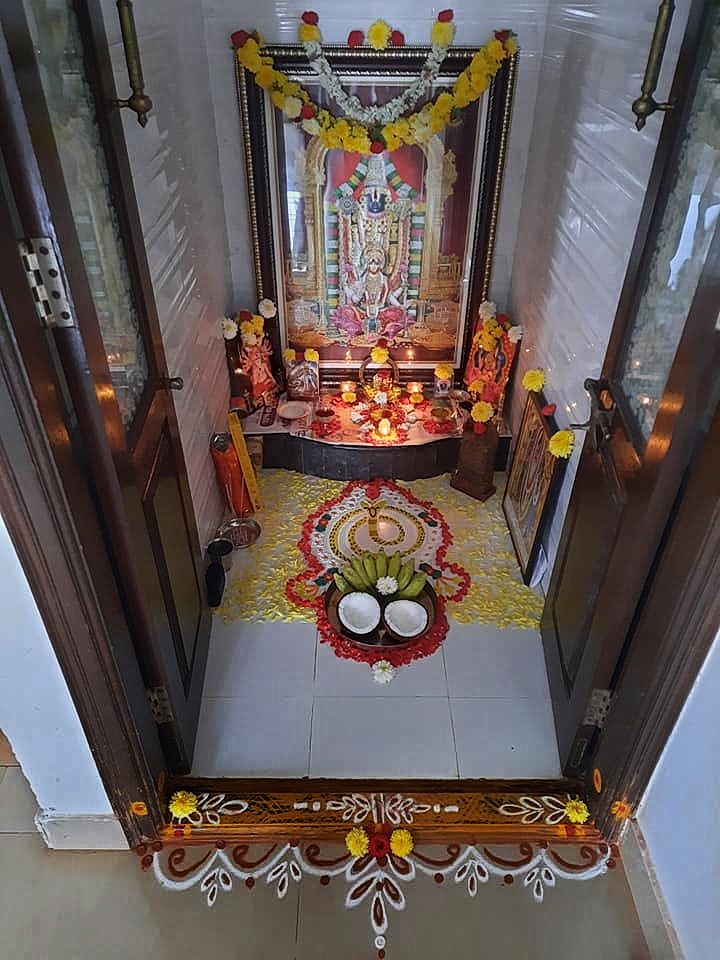

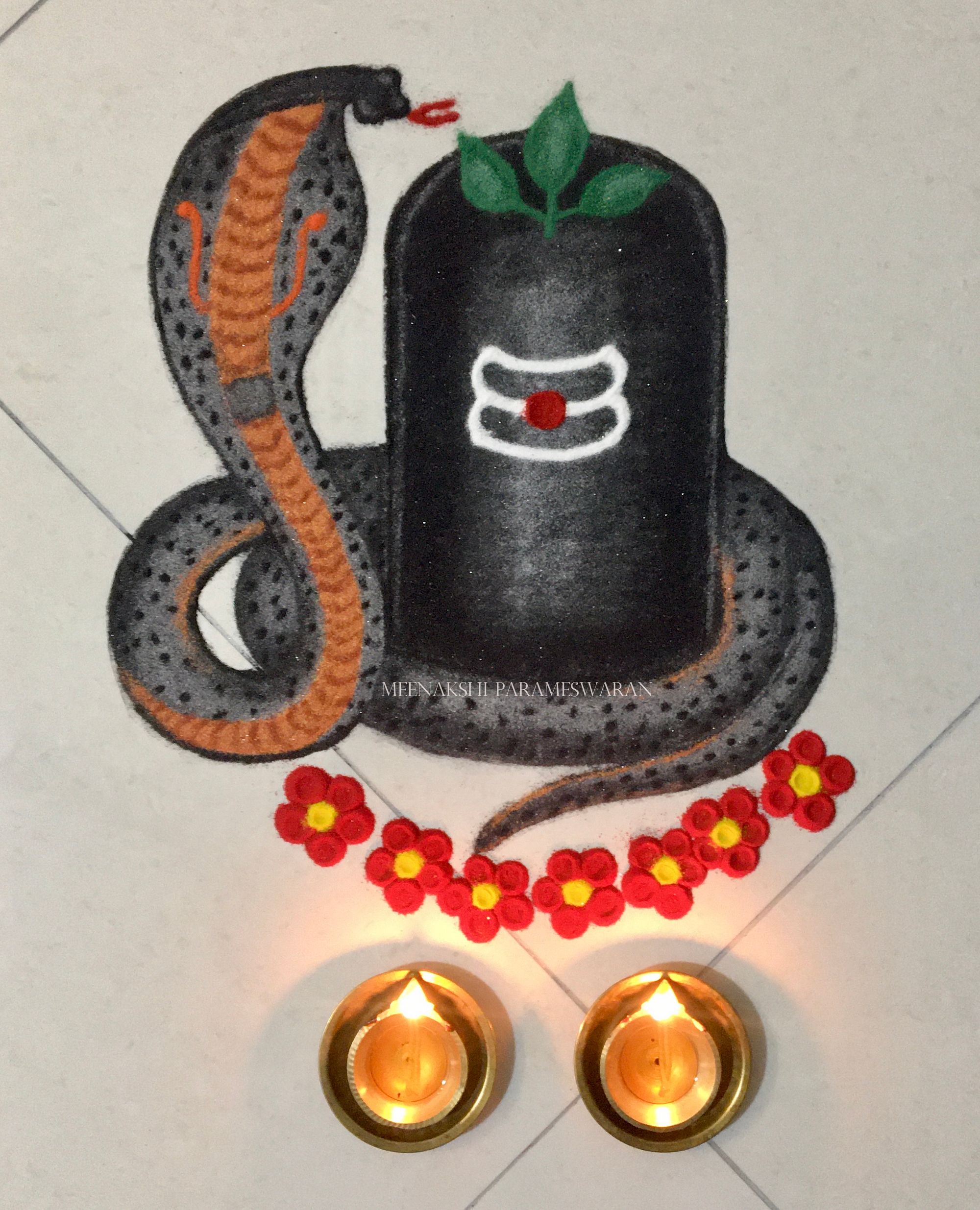
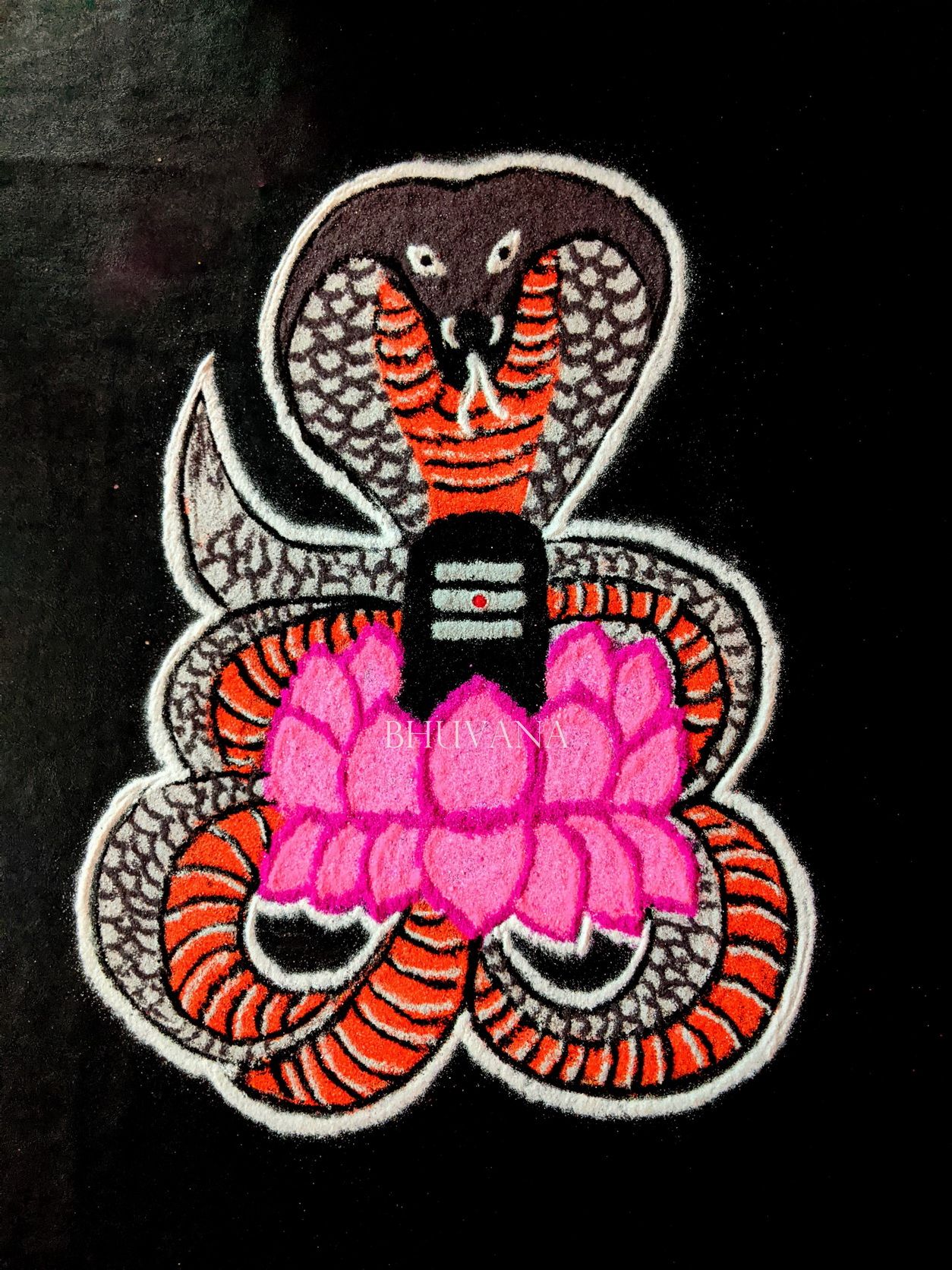
Interlace patterns and knots
The kolam depict either one snake or several gracefully coiled serpents. Their tails entwined into a skilful maze, bear resemblance to a sikku kolam made up with one or several continuous lines intersecting themselves, and forming knots. Some women advise not to draw them on pavements or on significant crossing areas because it would be a bad omen to trample them.
